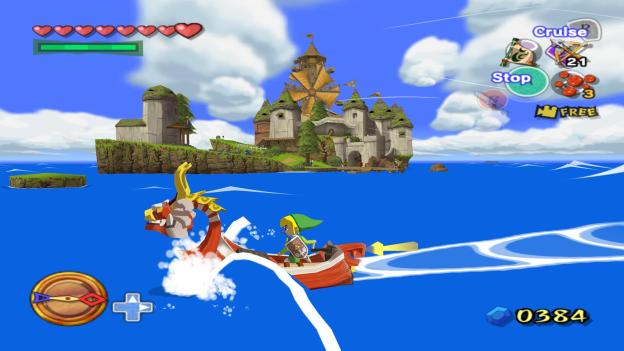 I generally stay away from personal narratives when it comes to game previews, but The Legend of Zelda: The Wind Waker remake merits an exception. The Legend of Zelda titles are games that have a sense of innocence and joy. They often depict violence, but it is always portrayed like a fairy tale. Even while the stories are complex, the themes are simple and timeless.
I generally stay away from personal narratives when it comes to game previews, but The Legend of Zelda: The Wind Waker remake merits an exception. The Legend of Zelda titles are games that have a sense of innocence and joy. They often depict violence, but it is always portrayed like a fairy tale. Even while the stories are complex, the themes are simple and timeless.
When The Wind Waker was released in 2003 (in America; it hit Japan the year earlier), it came during a particularly rough patch in my life. The details don’t matter. It wasn’t a “eating from a trashcan” bad time, or anything like it. It was just a rough time, and The Wind Waker actually was a game that I needed. Call it the right game at the right time, but it mattered, and it stuck. It was soothing, peaceful. It calmed me and brought a smile to my face during a time when those pleasures were rare.
Because of that, the HD remake was one of the first playable titles I bee-lined for at Nintendo during E3. And while the nostalgia can never fully recreate the original experience, I’m happy to report that it holds up. And now, someone else having a crappy time can experience this Zelda classic for themselves, now with 60fps.
Story/Concept

The story takes place in a Hyrule covered in water, with only a few sections of land jutting out above the oceans. You can explore the entire world. There are secrets to be found, and a land to discover. It is charming and has a childlike innocence, but also plenty of twists. The cel-shading adds a humor throughout, and Link is endearing. It was a great game when released, and a great game today.
Gameplay

You can also use the GamePad to physically move in order to move the camera. The touchscreen also changes the way you conduct music, an important feature in the game. The sailing has also been improved to make travel faster as well. It’s all little things, but it is an improvement.
Presentation

It may not be enough to win people over that disliked the original, but it may make the game more palatable to people that skipped it but are looking for a Wii U game to try out. In fact, with the anemic Wii U library, this game skyrockets to the top of the list of best Wii U games.
Takeaway
If you missed it the first time, or if you have the time to replay the fairly lengthy game, then the HD remake of The Legend of Zelda: The Wind Waker is easily among the best games available for the Wii U. And if you are having a rough time, it will be there for you , just like it was for me.
Editors' Recommendations
- The best horses in The Legend of Zelda: Breath of the Wild
- Legend of Zelda: Tears of the Kingdom’s Like Likes are absolutely horrifying
- The best Legend of Zelda characters of all time
- The Legend of Zelda: Tears of the Kingdom’s fuse ability reinvents the open-world game
- Before the Wii U eShop closes, pick up the best Zelda remaster ever


